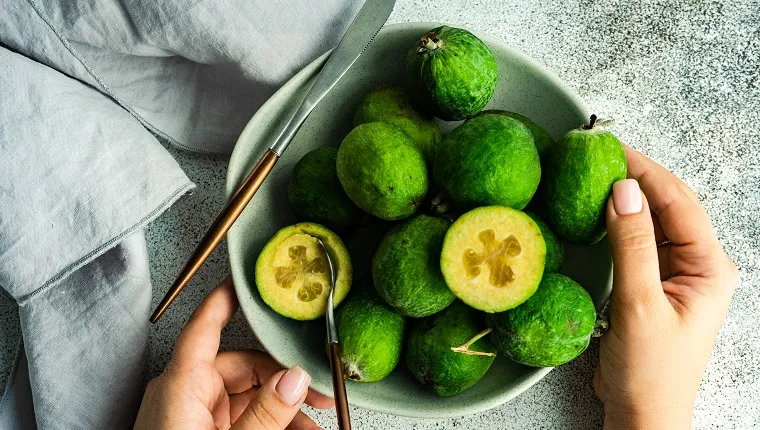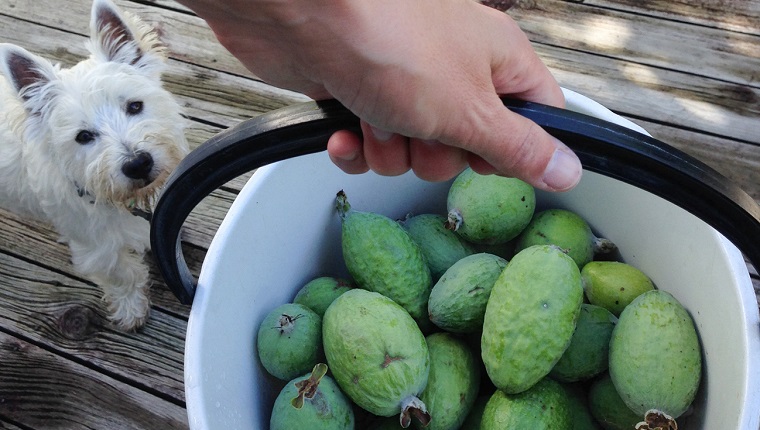Can dogs eat pineapple guava? Dogs can certainly eat pineapple, and guava is a wonderful treat for dogs. But does pineapple guava have the same attributes? Is it safe for dogs?
The short answer is yes, pineapple guava is safe for dogs with proper preparation, but it isn’t as safe as pineapple or guava. It isn’t as easy to prepare as either of those fruits, either, nor is it as nutritious.
Of course, you must get the facts from a veterinarian you trust before adding any new foods to your dog’s diet. Here is what you should know about how pineapple guava can be safe for dogs to eat, and how it differs from its namesake fruits.
How Is Pineapple Guava Good For Dogs?
Pineapple is basically a superfruit for dogs, and guava certainly makes a substantial nutritional case, but what about pineapple guava, also known as feijoa?
Well, technically, the fruit isn’t a variant of pineapple or guava. So, nutritionally, they can’t be compared based on any kind of relation. Pineapple guava was given its name because it looks just like guava but is significant in size, like a pineapple.
Unlike pineapple, pineapple guava is a seeded fruit, which means preparation is needed. Dogs and seeds of any kind typically don’t mix, with the notable exception of the dragon fruit.
That being said, pineapple guava does have a hearty texture that some dogs love with a taste that can have mixed results. It isn’t as sweet as pineapple, and in fact, has a bit more of a bitter twang to it.
How Can I Safely Give Pineapple Guava To My Dog?

As far as exotic fruits go, there are other options that are easier to prepare than pineapple guava with less health risk involved. Fruits such as papaya, dragon fruit, or even just your basic pineapple or guava are all excellent treats for dogs.
For pineapple guava, it’s the outer shell, the seeds inside, and the leaves and stems that are problematic. All of these are fairly easy to remove, however.
The outer shell can be sliced into like a watermelon, with the flesh inside easy to scoop out. Also, the seeds can be scooped out easily, and should be because they contain cyanide, which is toxic for dogs.
And, for the most part, you won’t have to deal with leaves and stems unless you’re acquiring your pineapple guava straight off its tree. But these, too, contain cyanide.
If you decide to serve pineapple guava to your dog after consulting a veterinarian, make sure that the flesh you serve is free of skin and seeds. You’ll also want to chop it into small chunks, as it’s a sizeable fruit.
Test out just one or two chunks to start. Then, keep an eye on your dog for a few hours to make sure they don’t have an allergic reaction.
Has your dog tried pineapple guava? How did they react to this new fruit? Let us know in the comments below.









